This is a question that I have been exploring as I watch all sorts of insects and animals visit the sunflowers I planted outside my window. I see bees sitting in the middle of the flowers seeming to cover themselves is the bright yellow dust of the flower, I see crickets sitting on the unopened blossoms and I’ve even seen birds pecking away at the flowers. Are all these animals pollinators? Do sunflowers(or any flower) need to be pollinated to make seeds? What even is a pollination?! All these questions and more can be answered if you keep scrolling.
Pollination is one way plants reproduce (make seeds that will grow into new plants). When you see a butterfly drinking nectar from a flower, you are almost certainly also watching pollination. When you observe bees gathering pollen into their pollen baskets or beetles rolling around in flowers, you are watching these insects help the plants create new seeds. This has been happening on earth for about 35 million years!
Breaking down pollination: pollen grains are usually tiny and look like flower dust. Pollen can also be pretty large–like on milkweed flowers and many orchids–and is usually yellow but can also be pink and other colors. Pollen contains plants’ genetic material. When pollen is moved from the male part of the flower (called the anther) to the female part of the flower (called the stigma) a fertilized egg begins to grow into a seed. For example, when pollen from one apple blossom reaches the stigma of another apple blossom, the beginning of an apple is created.
Pollination gives us fruits, vegetables, and nuts, accounting for at least one third of all foods we eat! It is an incredibly important scientific process for us to understand because we rely on it for so much of our food.
Some plants depend on an animal to move their pollen. Many different kinds of insects and animals help plants reproduce. Bees help to pollinate more plants than any other insect or animal! Some other pollinators you might have seen buzzing around are fly’s, beetles, hummingbirds, ants, butterflies, the list goes on and on! Can you spot the pollinator on this Sunflower?
Plants and their pollinators form a mutualistic relationship, a relationship in which each organism benefits from the other. In the plant pollinator relationship, the pollinator benefits by feeding on nectar and the plant benefits from being fertilized as the animal brings pollen from one flower to another.
Did you know that the shape, color, and the smell of flowers are all to attract certain kinds of pollinators? For example, American Trumpet Vine has long tubular flowers that attract Ruby-throated Hummingbirds. The shape of the flower allows the Hummingbird to fit its long beak into the flower to gather the nectar.
Another example is the Pawpaw flower. The dark red color of the flower and the unpleasant smell both attract flies that help to pollinate the tree’s flowers.
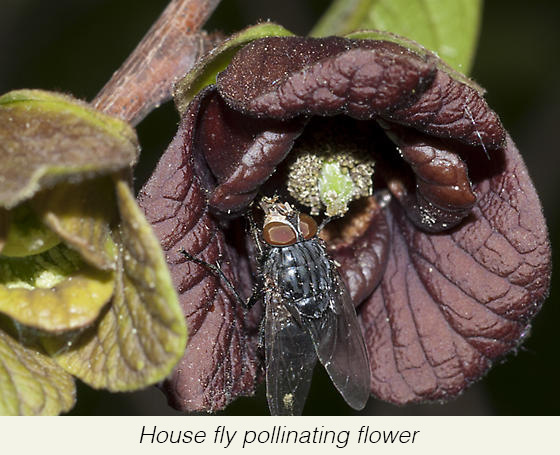
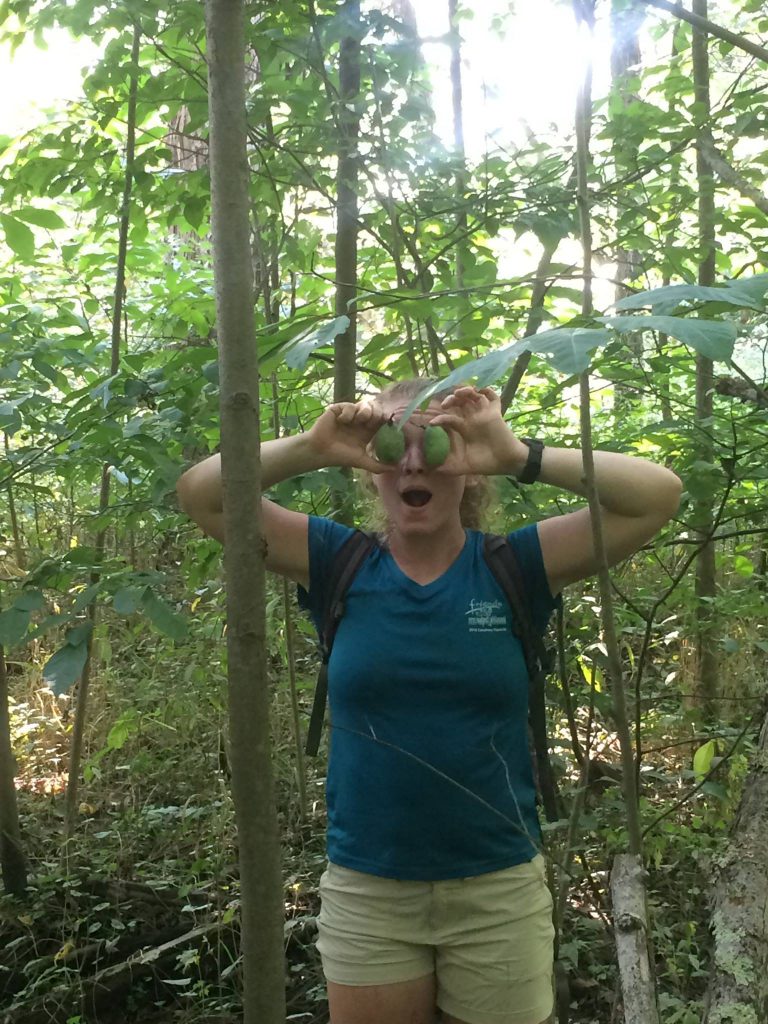
So next time a pesky fly is buzzing around you try to remember that without flies we would not be able to enjoy the tasty fruits from Pawpaw trees.
For more information on Pawpaw pollination and a video that teaches how to be a pollinator check out this link https://www.petersonpawpaws.com/pollination
Some plants don’t need animals to help them become pollinated. Wind and Water also serve as pollinators for some plants. If you ever feel congested or sneeze a lot in the spring it might be because pollen from plants like Oak Trees are being carried away in the wind so it can pollinate the flowers of an Oak Tree somewhere down wind. I like to think of each sneeze as a result from the explosion of life happening all around us!
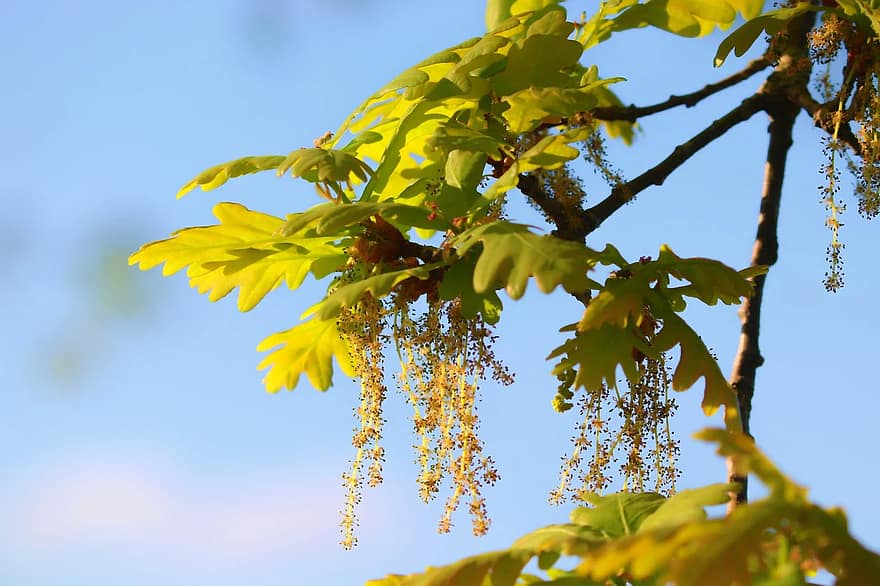
To learn more about pollinators and to review the research of a real scientist keep reading!
Pollinators of Ohio: Let’s talk about bees by Kelly Capuzzi
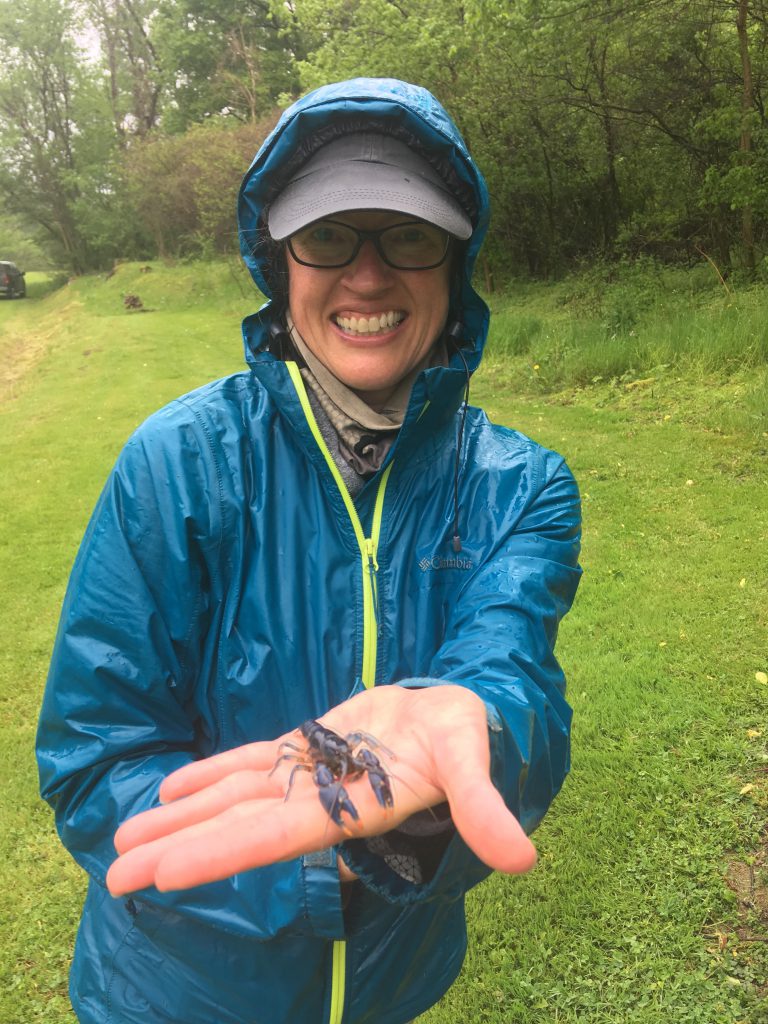
2020 is a very exciting year for pollinator research in Ohio. A statewide survey of Ohio native bees is being conducted by volunteers in almost every county. It is estimated that there are 400 to 450 species of native bees in the state of Ohio based on what has been found in nearby states. It’s hard to believe that we don’t know what species are in Ohio and we may even discover a new species. Some bees are very difficult to identify with just a photo, so unfortunately this survey does involve lethal sampling because the characteristics necessary to differentiate them have to be viewed under a microscope. This type of sampling has little impact on the overall population of bees. More information about the native Ohio Bee Survey can be found at this link: https://u.osu.edu/beesurvey/native-bee-survey-via-specimen-collections/
When we think about bees, most of our knowledge comes from honeybees: they build hives, they have a queen, they live together socially, and they make honey. Honeybees are native to Europe and Africa and were brought to the US to pollinate food crops and for honey production. If you think about it, honeybees are comparable to farm animals. Our native bees are so different from what we know about honeybees. Most native Ohio bees are solitary not social, they live in the ground not a hive, they do not make honey and they do not have a queen. There are some native bee species that are social such as bumble bees which also have a queen, but they nest in the ground and do not make honey. Our native bees are actually very good at pollinating food crops and are necessary to pollinate native plants. Some bees are specialist collecting pollen from only one species or family of plant. Native bees and native plants need each other to survive and reproduce! Want to learn more about native bees in Ohio? Here’s a link to Bees of Ohio: a Field Guide! Heather Holm also has a great website about bees and native plants. Sam Droege works for US Geological Survey and has high resolution pictures that can be viewed and downloaded from the USGS Bee Inventory and Monitoring Lab Flickr website. If you like podcasts, you should check out the PolliNation podcast from Oregon State University. If you would like to be an advocate for pollinators, the Ohio State University is offering a free class called Ohio Pollinators On-Line.
Activities to explore pollination:
Explore and Examine!
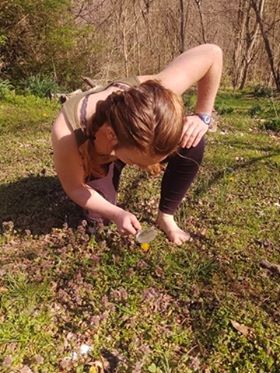
Check out the flowers all around your home. How are they shaped, how do they smell, what color are they? Can you infer what kind of pollinator they are trying to attract? Do you see any pollinators busy at work? Take a closer look to see if you can find any pollen stuck to them.
Imagine you are a pollinator:
Materials: Sidewalk Chalk, Cotton Ball
Instruction: Draw several pictures of different colored flowers using chalk. Then take a cotton ball and pretend it’s your favorite kind of pollinator. Have the pollinator visit the different flowers you drew to drink the nectar of the flowers, then examine the pollinator once it’s visited a few different flowers. The dusting of chalk left behind on the cotton ball represents the pollen that gets stuck to the pollinators as they move from flower to flower.